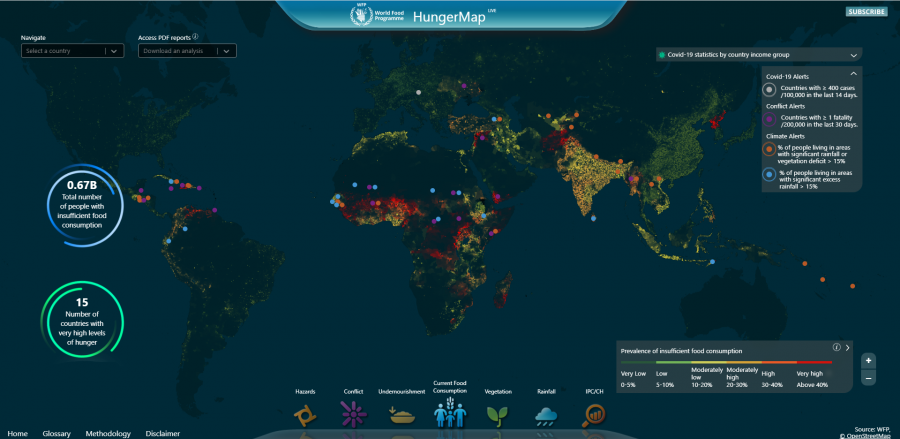
A downloadable version of this lesson is available here:
All environmental problems are social problems. Many involve the degradation of natural resources due to human actions that have negative consequences for communities, either immediately or over time, and most often for people with low income or social status. Sometimes, human actions meant to reduce the potential impact of natural events have the opposite effect. At the same time, humans depend on nature for food, water, and many other essential amenities. The overarching point is that humans are so intricately linked with nature that researchers cannot consider them in isolation—thus, the need to study socio-environmental systems (SES) as tightly linked. Those linkages are most pronounced through feedbacks between social components (e.g., people, institutions, social groups) and environmental components (e.g., plants, animals, and biophysical processes like sea level rise and nutrient flows). Many of the feedbacks are complicated and difficult to understand because they are so numerous, are rarely linear, span spatial scales, and have dynamics that may operate at different temporal scales. Changes in one part of an SES—perhaps due to a perturbation such as a war or a hurricane—result in changes in other components, and so, the system is said to adapt or “learn.” SESs are just one example of a complex adaptive system (CAS). Like in financial markets (another CAS), the complicated network of interactions in an SES makes it difficult to predict the system’s new state. Will it be stable or will resources or communities collapse?
This lesson introduces socio-environmental systems—often called socio-ecological systems—for learners who are new to the concept. After an initial discussion with slides, the lesson uses a systems thinking approach to challenge learners to draw and label the components and interactions of an SES related to a problem with food insecurity.
- Understand a systems approach to conceptualizing human-nature interactions.
- Construct an SES diagram around a problem.
- Learn why SESs are examples of complex adaptive systems.
- Recognize multiple dimensions of food insecurity as a socio-environmental problem.
Have learners complete the "Hook" during the session if it is 75 min. or prior to the session if it is shorter.
The below image, downloaded on 9 June 2023, shows a global map of world hunger created by the World Food Program. The map indicates where people are at greatest risk of hunger and if it is most related to hazards, conflict, undernourishment, or lack of rainfall/vegetation. Go to the interactive map and spend 3–4 minutes selecting different parts of the world. Identify a region of hunger that surprises you and note what the cause is.
(One 50- or 75-min. class).
Have the learners complete the hook on their own prior to the session, or for longer sessions, you may do this exercise at the very beginning. Note that for 50-min. class sessions, you will have to have all of the below activities ready to go as the lesson requires the full time period and you will not have time during this session for the learners' presentations after they complete their group activity.
-
(10 min.) Using the Introduction to Socio-Environmental Systems PowerPoint provided with this lesson, move quickly through the descriptions of the parts of an SES, explaining that there are many variations of these conceptual diagrams (also called frameworks). Many examples are provided in the slides, some with explanations; however, there is no need to go into detail because the short film that follows provides good explanations of several such diagrams. It also covers all of the important terms associated with SESs, which the learners are asked to define in the next steps.
Document -
(25 min.) Show in class this video tutorial “Building the Basics Part 1: Socio-Environmental Systems as Complex Adaptive Systems” by M.A. Palmer, starting at the timestamp 2:19 and ending at 19:58. (You will need the extra time unless this is a 75-min. class session.) While watching the video, have the learners jot down definitions of the following terms:
- Components, interactions, subsystems, system boundaries
- Actors (agents) and their multiple forms
- Feedbacks (the instructor may need to explain the difference between positive and negative feedbacks)
- Scale (the instructor may need to explain both temporal and spatial)
- Dynamics' emergent behavior
- System state, regime shift
Using a Socratic method, briefly discuss the terms with the group to be sure they understand the meaning (these terms are listed in the PowerPoint slide).
-
(15 min.) Divide the learners into groups of two or three people and provide each group with several large (poster-sized) sheets of paper and several markers. Ask each group to select one of the topics below to work on. It is fine if more than one group selects the same topic. Have each group develop a diagram that depicts an SES related to the problem topic they have chosen. Explain to them that the below topics are only meant to give them general ideas—they are free to create their own fictional “story” that stems from the topic. In their diagram, they should be sure to include and label the following:
- Components, including environmental and social (actors, agents)
- Interactions
- System boundary
- At least two scales (e.g., global, country level, regional, local, family, individual, etc.)
- At least one feedback, indicating if it is positive (reinforcing) or negative (balancing).
Available topics include the following:
Climate change and food. Changing climate patterns are worsening in parts of the world as existing food security is affected by climate-related disasters, such as drought and flooding. Agricultural land and crops can be decimated by wind and water or may go dry. People go hungry or may be forced to migrate to poor urban areas to seek employment.
Agricultural pests and food. The spread of agricultural pests is increasing in many parts of the world because of increases in global trade and rising temperatures due to climate change. This spread of pests has devastating effects on ecosystems, including many agroecosystems (farms). The social impacts are economic, which increases food insecurity for many people because higher prices are passed to the consumer.
Urban food. Inner cities in many developed countries have significant populations who experience food insecurity due to both the availability and affordability of nutritious foods and there being little land suitable for gardens. Many of the affected people feel trapped in urban regions with few options for other sources of food.
War and food. Since Russia invaded Ukraine, 6.3 million people (as of 26 June 2023) have become refugees. For many, their homes and adjacent land have been decimated. Some people were walking on roads for a long time and often had to take shelter in temporary housing where there was little food.
Dam construction and food. For many developing countries, the construction of dams is touted as helping to increase food security. While it can, there are also many examples where it actually results in increasing food insecurity. By 2023, dam building in Ethiopia has displaced many people where the land was flooded and there is now a reservoir. Many lost their cultivable and grazing land and had to migrate once they lost their income and source of homegrown food.
-
(15 min.) Have the learners reassemble and have each group present their diagram, allowing time for discussion and feedback from the instructor.
-
Advancing sustainability through mainstreaming a social-ecological systems perspective
This is a useful journal article because it provides an overview of the reasons that sustainability issues are examples of socio-environmental problems and why they require systems thinking to address. These reasons include recognizing that: humans depend on nature; collaboration among disciplines and with stakeholders or policymakers is required; and methods for addressing sustainability problems increasingly target the multiple components of a system and integrate different perspectives.
Fischer, J., Gardner, T.A., Bennett, E.M. et al. (2015). Advancing sustainability through mainstreaming a social-ecological systems perspective. Current Opinion in Environmental Sustainability, 14, 144-149. https://doi.org/10.1016/j.cosust.2015.06.002
-
What are socio-ecological systems and socio-ecological systems research?
This article provides an excellent but very general introduction to socio-environmental systems, what researchers study (e.g., sample problems), and the diversity of frameworks (conceptual diagram) that they use.
Biggs, R., Clements, H., de Vos, A. et al. (2021). What are socio-ecological systems and socio-ecological systems research? In R. Biggs, A. de Vos, R. Preiser et al. (Eds.), The Routledge Handbook of Research Methods for Socio-Ecological Systems (1st edition). Routledge. https://doi.org/10.4324/978100302133
-
Social-ecological systems as complex adaptive systems: modeling and policy implications
While this article is over a decade old, it remains one of the clearest descriptions of complex adaptive systems and all their characteristics. It includes examples and provides more advanced information on the characteristics of more sustainable systems, as well as how to design policies.
Levin, S., Xepapadeas, T., Crépin, A.S. et al. (2012). Social-ecological systems as complex adaptive systems: modeling and policy implications. Environment & Development Economics 18: 111–132. https://doi.org/10.1017/S1355770X12000460.
